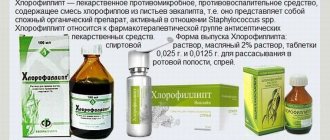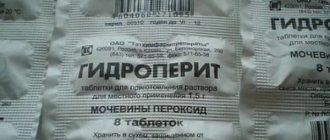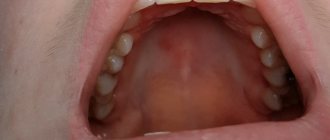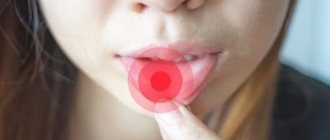For acute inflammation of the oral cavity - stomatitis - honey infusions and other nectar-based remedies are very helpful. What explains the beneficial and anti-inflammatory effects? Who is this type of treatment recommended for?
Beneficial features
Can stomatitis be treated with honey? Yes, statistics show that the natural components of bee products provide almost 100% of successful healing of the disease. The following remarkable properties of a natural remedy will improve the patient’s condition:
- Antibacterial action. The dessert serves as an antiseptic and protects against the recurrence of infections;
- Analgesic effect - the condition is significantly alleviated;
- Regeneration and relief of inflammation - healing occurs several times faster, the risk of complications disappears, bad breath goes away;
- Immunostimulation - the body replenishes the deficiency of nutrients and microelements, eliminates the risk of vitamin deficiency, and accumulates bioactive compounds.
The effectiveness of beekeeping sweet dessert increases if it is used in combination with pharmaceutical products.
Honey for stomatitis in children and adults: recipes and rules of administration
Due to weakened immunity, viral infections, allergic reactions, injuries, exposure to chemicals or poor hygiene, ulcers may form on the oral mucosa.
They are very painful and cause a lot of inconvenience, especially during conversations and eating.
Can stomatitis be treated with honey? Which recipes are the most effective? Is this method of treatment approved for children and are there any contraindications for use?
The healing properties of honey for stomatitis
It is not always possible to immediately seek help from specialists when a disease appears. Is it possible to choose honey as a healing agent for stomatitis? What properties of it will improve the condition?
Honey is a natural product that contains a large number of valuable microelements and vitamins necessary for human health. It has the following properties:
- Antiseptic, antimicrobial. Helps destroy pathogenic microorganisms and cleanse the oral cavity from them. Prevents re-formation of ulcers, protects existing affected areas from secondary infection.
- Painkiller. Reduces pain and alleviates the condition.
- Regenerative, anti-inflammatory. Heals, restores infected tissues, relieves inflammation, prevents complications. Relieves bad breath. Speeds up the healing process by several days.
- Immunostimulating. Replenishes the lack of a number of useful microelements, biologically active substances, vitamins in the body, which strengthens the immune system and cures vitamin deficiency.
Effect on the oral cavity
How is stomatitis treated with honey? Honey recipes have a healing effect on the mucous membrane and any inflammation, ulcers and complex formations. Signs of inflammation - external and deep - are eliminated, the balance of acids and alkalis in the mouth is restored.
The overall tone returns, because nectar contains an abundance of vitamins and minerals, proteins and antioxidants.
It is better to take natural, rich dark nectar for therapy. It should not be heat treated or contain preservatives or dyes.
Sometimes patients apply pure honey to the ulcer with a cotton swab, like iodine or brilliant green. But the pure composition can cause burning, pinching and pain; it is better to combine it with other substances.
General diet rules
A special feature of the diet for this oral disease should be food that is as neutral as possible and does not irritate the mucous membranes. It should be well crushed and have an enveloping and slimy consistency.
When organizing meals for a baby with this disease:
- It is necessary to adhere to small, frequent meals. Portions should be small, and the frequency of intake should be five or six times a day. It will be easier for the baby to eat a small portion, and it will be easier for parents to feed him.
- All food should be crushed as much as possible, and the consistency should resemble puree. Meat and fish are used only in the form of minced meat. The temperature of the food should not be higher than forty degrees, neither hot nor cold.
- Before eating, you can treat the child’s oral mucosa with products containing painkillers. You can use: Kamistad, Kalgel, Cholisal. Also, for pain relief before eating, you can give your baby Ibuprofen or Paracetamol. They will numb the mucous membrane in the mouth. You can safely feed your baby.
- After eating, be sure to rinse your mouth with water at room temperature. Then the mucous membrane is treated. For this, any disinfectant solutions are used (Furacillin, Chlorhexidine, Stomatofit, Miramistin). To do this, you can use decoctions of chamomile or sage herbs. This is done in order to disinfect the lesions and prevent the development of a secondary infectious process.
- It is necessary to apply oils to the mucous membrane that have the ability to activate reparation (recovery) processes.
It is impossible to cope with the disease with diet alone; it must be treated.
Indications for use
Stomatitis occurs for various reasons:
- standard minimum oral hygiene is not performed;
- the immune system is weakened, the body’s defenses decrease;
- there is an allergy or mechanical damage to the mucous membrane.
There are different types of stomatitis: bacterial, herpetic, drug-induced, catarrhal, aphthous. Regardless of the cause, the result is pain, fever, poor health, and weakness. The doctor can prescribe both pharmaceutical medications and gentle treatment options - based on herbal and natural ingredients.
It is recommended to use honey for stomatitis in adults in diluted form as part of rinses and ointments. These remedies give excellent results for stomatitis in children, and children will more easily accept treatment with sweets than with conventional medications.
Types of stomatitis
- Herpetic. The mucous membrane becomes irritated and bubbles filled with liquid form. The temperature may rise, your head will feel dizzy, you will begin to shiver, or other signs of ARVI will appear;
- aphthous is accompanied by the appearance of ulcers ranging in size from five millimeters to a centimeter. A maximum of three ulcers can form on the sides of the tongue, inside the cheeks or lips;
- fungal occurs due to Condida fungus. A persistent white coating appears because breast milk promotes the growth of the fungus. Children under one year of age become ill;
- allergic. The tongue and gums turn red, there may not be a fever, but after a while this type can develop into another more serious type of disease;
- bacterial occurs during teething in children. It can also occur when causing injuries to the oral cavity. Injuries can be either mechanical or thermal. With poor hygiene, the risk of this disease is also high.
Recipes
The following are several common and publicly available recipes for self-therapy.
Classical
The most common and popular option, used for patients of any age. You only need two components: 1 tbsp. a spoonful of May nectar (or any other common one will do), 250 ml of warm water.
The product is dissolved and the resulting mixture is used to rinse the mouth before and after meals. To prevent the spread of pathogenic bacteria, you can rinse your throat.
Rinsing according to this recipe heals small wounds and serves as a prevention of ulcers in the upper part of the respiratory tract. The procedure is performed 3-5 times a day until complete healing.
With aloe
Homemade agave is a real storehouse of useful substances that increase their effectiveness several times in sync with the effects of honey. It is an antiseptic, a biostimulant that perfectly heals wounds and ulcers.
To prepare a useful product, it is important to take the lower leaves, which are at least 5 years old - they have accumulated the maximum amount of useful substances. At the same time, the sweet components soften the bitterness of aloe, and there will be no unpleasant sensations.
- Take the 2 bottom leaves from the plant and put it in the refrigerator for 1 day to thicken the juices.
- Grind the leaves and squeeze out the juice.
- Add liquid honey (proportion: 1 part aloe, 2 parts dessert), mix thoroughly.
You can use the product in two ways:
- applied to a tampon. Dampen a swab or cotton pad and gently wipe the sores. If stomatitis is treated with honey in children, the entire mouth is wiped. It is important that the baby does not lick the medicine earlier than after 5-7 minutes;
- in the form of a rinse solution. To do this, dilute 2 tablespoons of the product in 1 glass of warm water, rinse your mouth at least 5 times a day, especially thoroughly before bed.
This recipe is also very useful for any mechanical damage and injuries to the jaw, or cuts to the oral cavity.
With novocaine
This recipe is applicable only to adult patients. Novocaine can cause severe irritation in a child. The product is prepared as follows:
- 1 tbsp. A spoonful of honey is mixed with 1 teaspoon of sunflower or olive oil, heated in steam or a water bath, up to 50 C.
- Add 1 egg white and the contents of 1 ampoule of novocaine (5 ml).
- Mix the ingredients thoroughly and apply to painful areas of the mouth after eating. Keep for about 7 minutes, then rinse thoroughly.
The composition can be stored for 2-3 days in the refrigerator. You cannot keep the mixture in your mouth for too long, as it can cause caries.
With chamomile
Use a flower decoction of chamomile against stomatitis - it is safe and does not cause allergies.
- Brew 200 ml of boiling water 2 tbsp. small chamomile flowers from the pharmacy. It is optimal to heat melt water.
- Keep the mixture in a water bath for 15 minutes, then remove from the stove and cool to 40 C.
- Strain the mixture, add warm water at the same temperature until the volume reaches 0.5 liters.
- Dissolve 1 tbsp. a spoonful of honey, rinse your mouth after meals at least 3 times a day (0.5 cups of liquid).
- It is better to store the decoction in the refrigerator, and warm it up to 30-40 C before each use.
It is recommended to use a product based on linden or acacia nectar for the recipe.
Ready-made ointments
The pharmaceutical industry offers a selection of drugs for inflammation in the form of ointments and solutions. It is recommended to smear the wounds in accordance with the instructions. Popular medications are Acyclovir, Oxolinic ointment, Metrogyl, Methyluracil, Nystatil, Cholisal and others. You can combine their use with natural homemade solutions.
Contraindications
Like any medicinal product, this composition can have a number of negative effects on the body in certain cases. You cannot treat the oral cavity with beekeeping products if there is an allergy to the components, pregnancy in the last phase, gastritis and increased stomach acidity.
Stomatitis in children under 3 years of age can be treated with honey only on the recommendation of a doctor - otherwise a hidden diathesis may be discovered.
It is very important not to exceed the dosage and frequency of taking the drug. Stomatitis should be treated with honey according to a schedule and in accordance with the established duration. In this case, the effect will be positive, and the disease can be completely eliminated.
Honey for stomatitis: can stomatitis be treated with honey?
Can honey be used for stomatitis? This controversial issue between folk and traditional medicine does not give us a definitive answer. Let’s look at who to trust and how to come to the only right decision together.
Stomatitis is a serious disease
The etiology of stomatitis is the penetration of viruses and bacteria into the oral cavity, causing the formation of ulcers and erosions. Painful formations must be treated immediately, as there is a risk of transition from the acute period to the chronic course.
The disease most often occurs in preschool children. This is due to the failure of the immune system and curiosity to taste everything. Bacteria that enter the mouth multiply at a rapid speed, leading to the development of pathology. It is difficult to protect a child from illness.
The only way out is to follow the baby with a disinfectant solution and treat everything he picks up.
This is stupid and pointless; if you do this, the child will be even more susceptible to various diseases, since the mother does not allow the immune system to produce antibodies to fight diseases.
The only way to help a child with stomatitis is to quickly take measures to eliminate the pathology, treat it correctly and protect the child from contact with healthy children.











